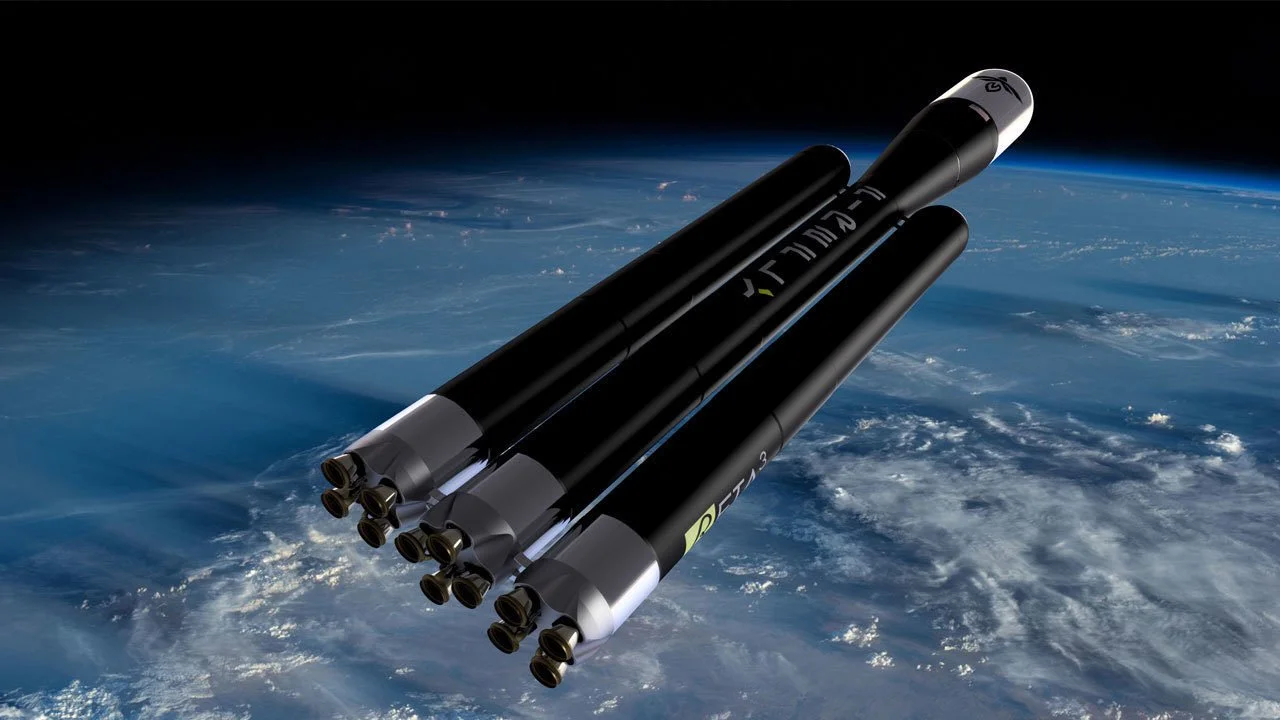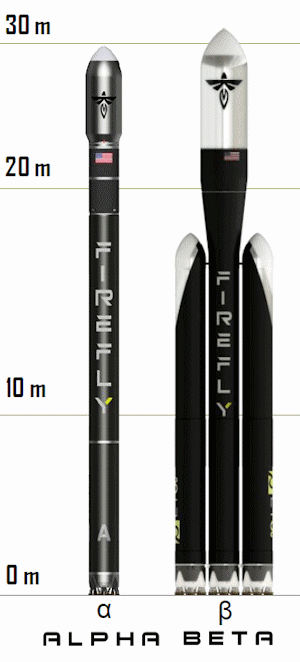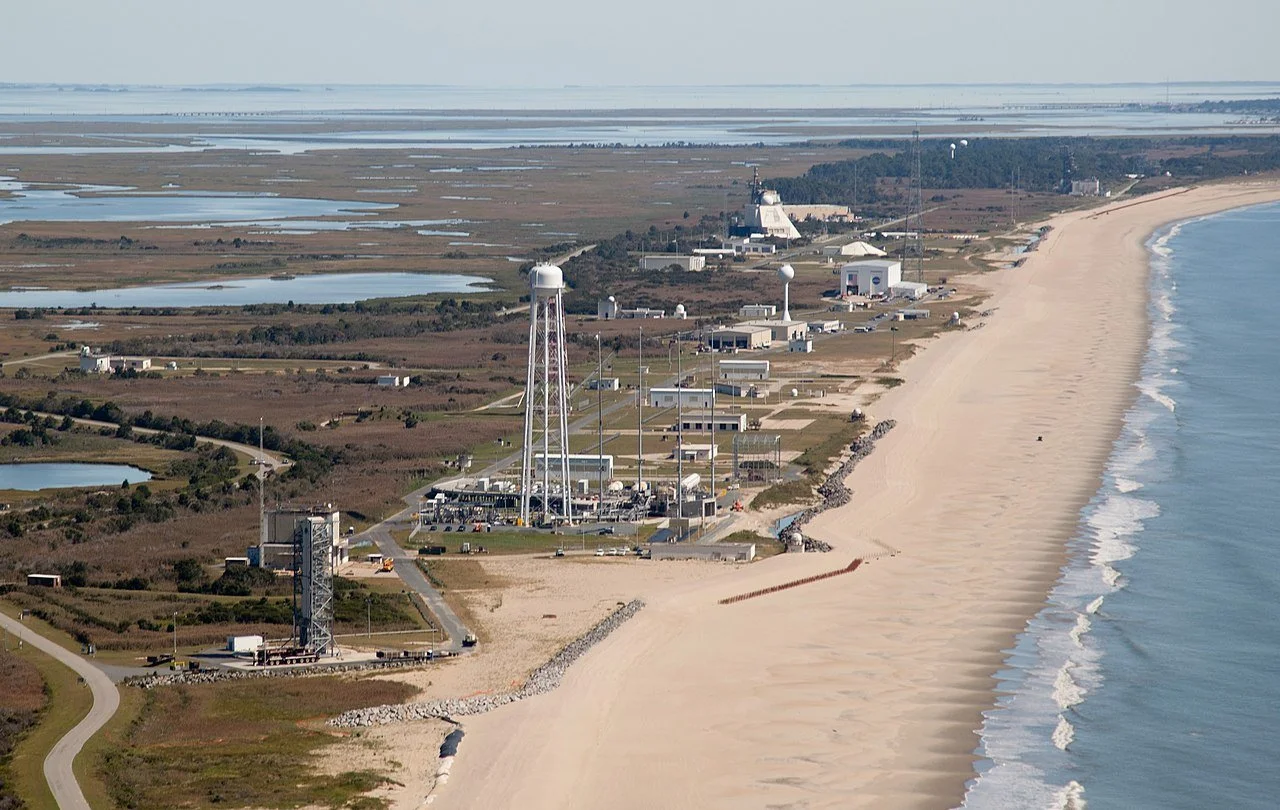Eclipse: Firefly Space has given a name to their MLV rocket!
Made by Magnum and Raptor Engine
HISTORY
Firefly Beta: the start
The first hint of a heavier launch vehicle by Firefly Aerospace came in 2017, year of their foundation after Firefly Space Systems went bankrupt, under the name “Firefly Beta”, following the naming scheme of Firefly, after their Alpha rocket. The initial design included a rocket similar to Delta-IV Heavy, with 3 first-stage boosters of the Alpha launch vehicle strapped together; this design was able to take up to 3000 kg to a 500-km SSO (Sun-Synchronous Orbit), and in 2019 it was contracted to launch from SLC-2W at Vandenberg, previously used by Delta II.
However, the triple-rocket design didn’t stay around for long, as Firefly made a major redesign in 2020 and 2021: they eliminated the 2 side boosters, and switched from 5 Reaver engines to 7 Miranda engines on the first stage. With these changes, Beta would be able to take 8000 kg to a 200-km LEO (Low Earth Orbit), and it could also send up to 1 ton to GTO (Geostationary Transfer Orbit); but overall, it would still be just 31m high and 3.7m wide.
Initial concept of Firefly Beta. Credit: https://www.clickorlando.com/news/2019/02/22/what-to-know-about-firefly-aerospace-the-capes-newest-commercial-space-resident/
The turning point: partnership with Northrop Grumman
On August 8th, 2022, Firefly started a partnership with Northrop Grumman to develop the first stage of Antares 330, deriving it from the first stage of MLV. This started an incredible journey of funding and expansion: the MLV design significantly increased to 57m high, now able to take up to 16 t to LEO! In 2024, reusability came on the table, as Firefly revealed their first stage would’ve attempted RTLS starting from its 6th launch. Additionally, they kept developing their engines and their rocket’s structure, thanks to an incredible expansion of their manufacturing facility in Briggs, Texas.
Firefly’s Alpha and Beta launch vehicles, those that NG would help developing.
Eclipse: a new era
On May 29th, 2025, Firefly finally revealed the name of MLV: Eclipse! Now, they’re laser focused on getting this rocket on the pad in the second half of 2026! Development is continuing with good pace, and now we are going to learn about the rocket’s design thanks to our writer Raptor!
Animation of Eclipse launching. Credit: Firefly Aerospace
Anatomy of the Eclipse.
What material is the Eclipse skeleton made of?
Firefly trust relies on a carbon-fiber composite for the air-frame, using the knowledge in the construction of the Alpha, looking at the dimensions, it has an overall length of 59 meters or 194 feet with a diameter of approximately 4.32 meters or 14.2 feet and a slightly bigger fairing diameter of 5.4 meters or 17.7 feet and it can be modified to support commercial, civil. national security including international missions while also supplying the necessities of the customer, this necessities being the size and the weight, Firefly can design a “rideshare” adapter to be able to launch multiples payloads to a variety of orbits including LEO (Low Earth Orbit) GTO ( Geostationary Transfer Orbit) TLI (Trans-Lunar Injection) or even polar orbit, but, this rocket need a engine to power it, lets talk about the Miranda and Vira.
A duo of sisters.
The first stage uses seven Miranda engines, taking advantage of the tap-off cycle by using a small portion of the hot exhaust gas from the rocket engine's combustion chamber and routing it through the turbopump turbines to power them before being exhausted. It is expected to produce 1,023 kilonewtons, or 230,000 pounds-force, of thrust and a specific impulse of 305 seconds, producing all 7 engines together a combined thrust of 7,161 kN, or 1,610,000 pounds-force. The second stage uses a vacuum-optimized version of the Miranda engine called Vira, able to produce 890 kilonewtons, or 200,000 pounds force of thrust and a specific impulse of 328 seconds in vacuum. Vira is relightable for missions that require multiple upper-stage burns.
Eclipse's main propellant in both the first and second stages is a combination of RP-1, also known as Rocket Propellant-1, and LOX, mostly known as Liquid Oxygen; this combination is commonly referred as Kerolox.
But to support all of this engineering beauty, we need a pad and a location. Let me introduce you to Launch Pad 0A.
Miranda firing at its test stand. Credit: Firefly Aerospace
Where Rockets take their way to space.
All rockets need a pad able to support the fire of their engines, but also important, a location.
Welcome to Wallops, Virginia.
Launch Pad 0A, shortened to LP-0A, will support the maiden flight and other early launches of Eclipse in part because of the ease in comparability with the Antares 330 first stage engine. This launch pad was used by the Conestoga launch vehicle and also subsequently used from 2013 to 2023 by the Antares 100 and 200 series. These 3 rockets could get an article, so leave a comment about which rocket you want first.
Firefly first gained control of the pad in 2019, following the United States Air Force making an expansion of Eastern Range launch activities in the wake of the NewSpace boom. Firefly has declared intentions to construct an assembly facility at Cape Canaveral; however, they have acknowledged in 2024 that they are prioritizing development at LP-0A first.
Eclipse’s launch complex. Credit: Firefly Aerospace




